Glycosylation of gp41 of simian immunodeficiency virus shields epitopes that can be targets for neutralizing antibodies
- PMID: 18829751
- PMCID: PMC2593353
- DOI: 10.1128/JVI.01382-08
Glycosylation of gp41 of simian immunodeficiency virus shields epitopes that can be targets for neutralizing antibodies
Abstract
Human immunodeficiency virus type 1 and simian immunodeficiency virus possess three closely spaced, highly conserved sites for N-linked carbohydrate attachment in the extracellular domain of the transmembrane protein gp41. We infected rhesus monkeys with a variant of cloned SIVmac239 lacking the second and third sites or with a variant strain lacking all three of SIVmac239's glycosylation sites in gp41. For each mutation, asparagine (N) in the canonical N-X-S/T recognition sequence for carbohydrate attachment was changed to the structurally similar glutamine such that two nucleotide changes would be required for a reversion of the mutated codon. By 16 weeks, experimentally infected monkeys made antibodies that neutralized the mutant viruses to high titers. Such antibodies were not observed in monkeys infected with the parental virus. Thus, new specificities were revealed as a result of the carbohydrate attachment mutations, and antibodies of these specificities had neutralizing activity. Unlike monkeys infected with the parental virus, monkeys infected with the mutant viruses made antibodies that reacted with peptides corresponding to the sequences in this region. Furthermore, there was strong selective pressure for the emergence of variant sequences in this region during the course of infection. By analyzing the neutralization profiles of sequence variants, we were able to define three mutations (Q625R, K631N, and Q634H) in the region of the glycosylation site mutations that conferred resistance to neutralization by plasma from the monkeys infected with mutant virus. Based on the reactivity of antibodies to peptides in this region and the colocalization of neutralization escape mutations, we conclude that N-linked carbohydrates in the ectodomain of the transmembrane protein shield underlying epitopes that would otherwise be the direct targets of neutralizing antibodies.
Figures
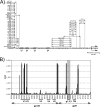

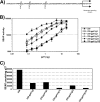





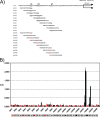
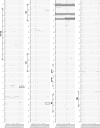
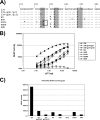

Similar articles
-
Neutralizing capacity of monoclonal antibodies that recognize peptide sequences underlying the carbohydrates on gp41 of simian immunodeficiency virus.J Virol. 2012 Dec;86(23):12484-93. doi: 10.1128/JVI.01959-12. Epub 2012 Sep 19. J Virol. 2012. PMID: 22993152 Free PMC article.
-
Simian immunodeficiency virus mutants resistant to serum neutralization arise during persistent infection of rhesus monkeys.J Virol. 1993 Jul;67(7):4104-13. doi: 10.1128/JVI.67.7.4104-4113.1993. J Virol. 1993. PMID: 8510218 Free PMC article.
-
Evidence against extracellular exposure of a highly immunogenic region in the C-terminal domain of the simian immunodeficiency virus gp41 transmembrane protein.J Virol. 2012 Jan;86(2):1145-57. doi: 10.1128/JVI.06463-11. Epub 2011 Nov 9. J Virol. 2012. PMID: 22072749 Free PMC article.
-
Strain-specific neutralizing determinant in the transmembrane protein of simian immunodeficiency virus.J Virol. 1991 Apr;65(4):2010-8. doi: 10.1128/JVI.65.4.2010-2018.1991. J Virol. 1991. PMID: 1705994 Free PMC article.
-
Envelope sequence variation, neutralizing antibodies, and primate lentivirus persistence.Curr Top Microbiol Immunol. 1994;188:185-219. doi: 10.1007/978-3-642-78536-8_11. Curr Top Microbiol Immunol. 1994. PMID: 7523031 Review.
Cited by
-
Models of RNA virus evolution and their roles in vaccine design.Immunome Res. 2010 Nov 3;6 Suppl 2(Suppl 2):S5. doi: 10.1186/1745-7580-6-S2-S5. Immunome Res. 2010. PMID: 21067547 Free PMC article.
-
Neutralizing capacity of monoclonal antibodies that recognize peptide sequences underlying the carbohydrates on gp41 of simian immunodeficiency virus.J Virol. 2012 Dec;86(23):12484-93. doi: 10.1128/JVI.01959-12. Epub 2012 Sep 19. J Virol. 2012. PMID: 22993152 Free PMC article.
-
Functional contributions of carbohydrate on AIDS virus glycoprotein.Yale J Biol Med. 2010 Dec;83(4):201-8. Yale J Biol Med. 2010. PMID: 21165339 Free PMC article. Review.
-
High-Resolution Sequencing of Viral Populations during Early Simian Immunodeficiency Virus Infection Reveals Evolutionary Strategies for Rapid Escape from Emerging Env-Specific Antibody Responses.J Virol. 2018 Mar 14;92(7):e01574-17. doi: 10.1128/JVI.01574-17. Print 2018 Apr 1. J Virol. 2018. PMID: 29343575 Free PMC article.
-
Fundamental difference in the content of high-mannose carbohydrate in the HIV-1 and HIV-2 lineages.J Virol. 2010 Sep;84(18):8998-9009. doi: 10.1128/JVI.00996-10. Epub 2010 Jul 7. J Virol. 2010. PMID: 20610711 Free PMC article.
References
-
- Back, N. K. T., L. Smit, J.-J. De Jong, W. Keulen, M. Schutten, J. Goudsmit, and M. Tersmette. 1994. An N-glycan within the human immunodeficiency virus type 1 gp120 V3 loop affects virus neutralization. Virology 199431-438. - PubMed
-
- Bahraoui, E., A. Benjouad, D. Guetard, H. Kolbe, J. C. Gluckman, and L. Montagnier. 1992. Study of the interaction of HIV-1 and HIV-2 envelope glycoproteins with the CD4 receptor and role of N-glycans. AIDS Res. Hum. Retrovir. 8565-573. - PubMed
-
- Binley, J. M., R. Wyatt, E. Desjardins, P. D. Kwong, W. Hendrickson, J. P. Moore, and J. Sodroski. 1998. Analysis of the interaction of antibodies with a conserved enzymatically deglycosylated core of the HIV type 1 envelope glycoprotein 120. AIDS Res. Hum. Retrovir. 14191-198. - PubMed
-
- Blay, W. M., S. Gnanakaran, B. Foley, N. A. Doria-Rose, B. T. Korber, and N. L. Haigwood. 2006. Consistent patterns of change during the divergence of human immunodeficiency virus type 1 envelope from that of the inoculated virus in simian/human immunodeficiency virus-infected macaques. J. Virol. 80999-1014. - PMC - PubMed
-
- Bolmstedt, A., S. Sjolander, J. E. Hansen, L. Akerblom, A. Hemming, S. L. Hu, B. Morein, and S. Olofsson. 1996. Influence of N-linked glycans in V4-V5 region of human immunodeficiency virus type 1 glycoprotein gp160 on induction of a virus-neutralizing humoral response. J. Acquir. Immune Defic. Syndr. Hum. Retrovirol. 12213-220. - PubMed
Publication types
MeSH terms
Substances
Grants and funding
LinkOut - more resources
Full Text Sources

